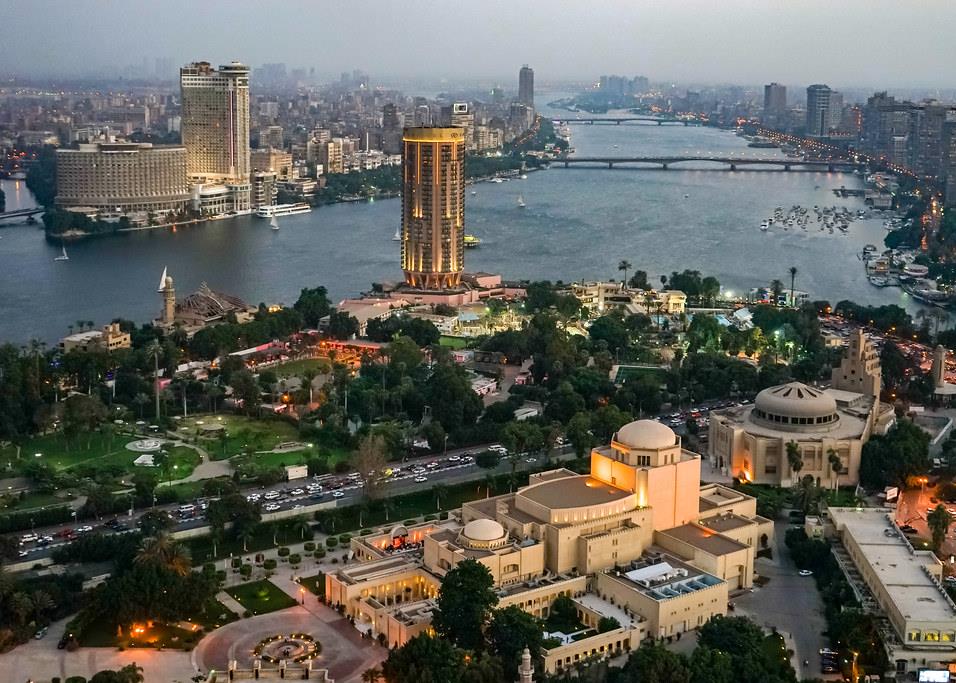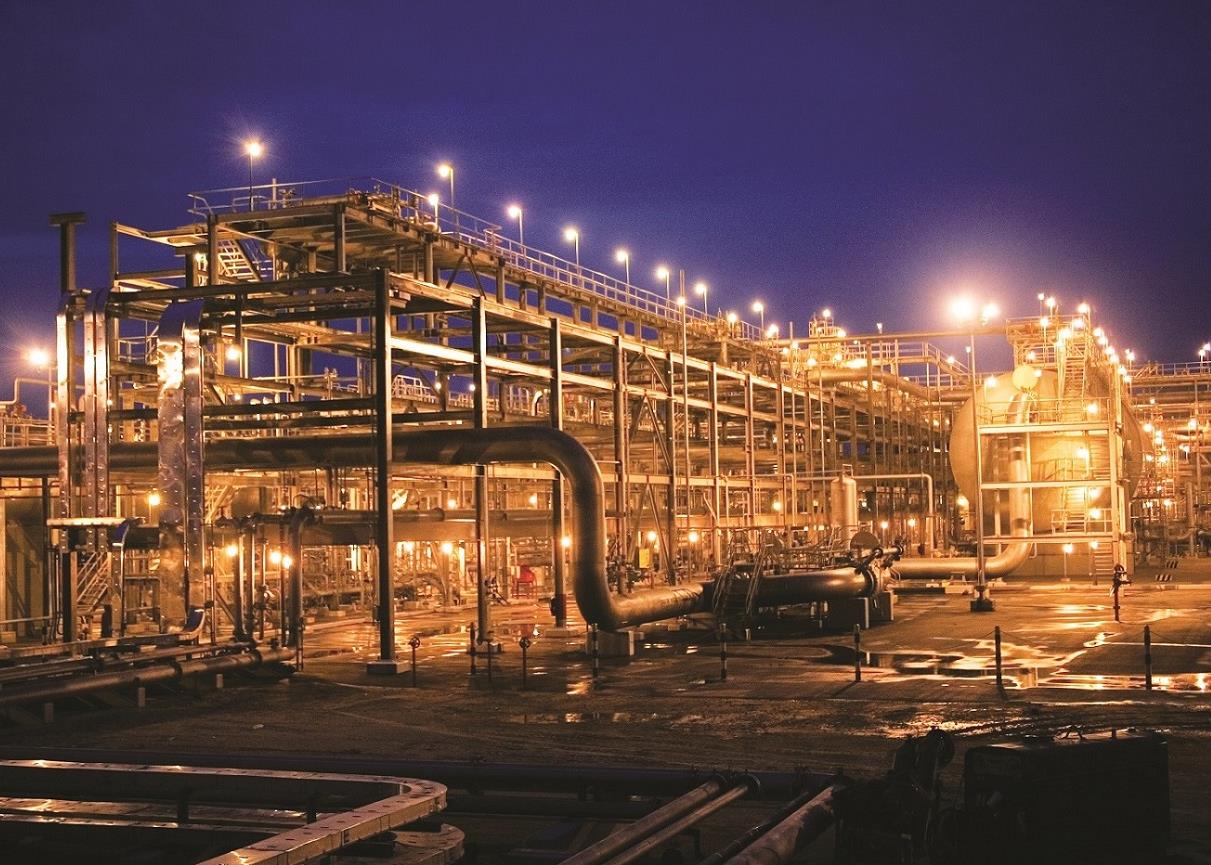
The highest oil prices since 1990 ensured that last year was an exceptional one for Saudi Arabia's economy. No country benefited more from rising prices during 1996 than the world's largest oil exporter. Revenues soared, state spending rose after a squeeze of several years and a backlog of government debts was cleared. The turnaround in the country's financial fortunes has improved sentiment after the difficulties of recent years and done much to revive business confidence.
The surprise rise in revenues has put previous talk of a financial crisis out of mind for the time being. Revenues were SR 45,000 million ($12,100 million) higher than expected, giving the government an exceptional windfall which it used to pay off creditors and to settle some of its other funding difficulties. Conditions are auspicious for 1997 as well. 'The Saudi economy has passed through the trough of the current cycle and is now well-positioned on a higher growth path,' says Henry Azzam, chief economist at National Commercial Bank (NCB) in Jeddah.
Domestic liquidity has received a considerable boost from the government debt settlement. Arrears dating back to 1992 were cleared in payments to creditors worth SR 22,000 million ($5,900 million). The main beneficiaries were farmers, contractors and medical suppliers. By tidying up its domestic debts in this way the government has restored confidence in its creditworthiness and management of the nation's finances.
The main economic indicators:
Growth. Finance Ministry figures show that gross domestic product (GDP) grew by 8.6 per cent in nominal terms in 1996, mostly attributable to the rise in oil prices. This compares with nominal growth of 4.3 per cent in 1995, 1.7 per cent in 1994 and negative growth in 1993. Real growth last year was about 5 per cent, after real growth of less than 1 per cent in each of the previous two years. The private sector share of GDP was 35 per cent, up by 3.5 per cent in nominal terms from a year earlier. This reflected the pick-up in private sector activity in the second half of last year in the wake of government payments to creditors. Azzam forecasts nominal GDP growth of about 3 per cent in 1997. Real growth may be closer to 2 per cent, he says. Private sector GDP should grow by about 4 per cent in nominal terms.
Inflation. Inflation was less than 1 per cent, down from 5 per cent in 1995. Consumer prices are expected to rise by about 1 per cent this year.
Current account. In December, the Finance Ministry released preliminary figures for 1996 which showed the current account in surplus for the first time since 1982. The surplus was modest, at SR 700 million ($190 million) but in marked contrast to the deficit of SR 19,900 million ($5,300 million) recorded for 1995. A sustainable surplus on the balance of payments may still be a distant prospect, but the provisional figures for 1996 demonstrate how useful a surge in oil prices can be for the national accounts. The current account surplus in 1996 was due mostly to an improvement in the trade account which had an estimated surplus of SR 106,875 million ($28,500) million. The surplus may be difficult to repeat this year, if imports rise as expected following the modestly expansionist budget for 1997, announced by King Fahd at the end of last year (see page 17). MEED anticipates a current account deficit of about $1,925 million this year.
Reserves. Some of the windfall revenue generated in 1996 by rising oil prices was expected to find its way into the kingdom's foreign exchange reserves. These rose steadily in the first half of last year, creating the impression that a concerted effort was under way to rebuild reserves after their rapid depletion in recent years. However, figures in the February edition of International Financial Statistics (IFS), published by the IMF, show that reserves fell from a 1996 peak of $11,022 million in May to $6,794 million at the end of December. This was the lowest end of year figure since 1992.
Economists say that this is still within a normal range of month-by-month fluctuations and a rise can be expected this year. The end-1996 figure is equal to about three months import cover. The recent decline may be due to a drawing down of reserves to assist debt payments, combined with some reallocation of assets, bankers say. A movement into higher earning assets, such as bonds, would not show up in figures for reserves, which only record holdings of liquid instruments, such as treasury bills and bank deposits.
Interest rates. Saudi interest rates have been steady since the autumn. The yield on 28-365-day treasury bills was 5.4-5.7 per cent at the end of February, marginally up on levels seen at the end of last year. SR 2,000 million ($530 million) in treasury bills are being offered each week, compared to
SR 3,000 million-3,500 million ($800 million-930 million) a week last year. The 365-day maturity offerings now take place weekly instead of once a month. Economists expect to see a rise of at least half a percentage point in interest rates by the end of the
year.
Oil prices. Crude oil prices continued to rise going into 1997, with the benchmark Brent blend reaching a peak of $24.80 a barrel on 6 January. The OPEC basket price averaged $20.13 a barrel in 1996 and peaked at $24.10 a barrel on 8 January. By early March it had eased back to about $20 a barrel. Such price levels are the lowest seen since early September, but are still about $2 a barrel up on the corresponding period last year.
Most analysts are fairly bullish about oil price prospects for the year, forecasting an average that will be 3-4 per cent down on last year at about $19.50 a barrel. Some commentators say prices may have finally broken out of a range of $15- 20 a barrel, in which they were trapped for the previous four years and moved into a band from $18-23 a barrel.
Extra oil
The resumption of Iraqi oil sales has created the biggest uncertainty for 1997. The addition of up to 750,000 barrels a day (b/d) of Iraqi oil is a significant boost to OPEC supplies and, combined with a rise in non- OPEC production, could lead to a serious over-supply during the course of the year. According to its agreement with the UN, Iraq's oil exports are fixed by value rather than volume. This will force Baghdad to sell more oil when prices are falling, less when they are rising. Iraq has already been authorised to sell extra cargoes to meet its financial targets during the first quarter of the UN deal which ended on 9 March.
Saudi Arabia's income from oil sales should still be up on 1995. Revenues from oil sales take several months to materialise and the extra income generated in late 1996, when prices were high, will appear in national accounts this year. Although average oil prices may fall slightly in 1997, the actual revenue received over the year may be little changed from last year.
The budget. The 1997 budget predicts spending of SR 181,000 million ($48,000 million) in 1997 and a deficit of SR 17,000 million ($4,500 million), or 3.3 per cent of gross domestic product (GDP). The budget was welcomed by the business community as being growth-oriented after several years of spending restraint. Economists say that it should stimulate private sector activity.
Proposed spending has risen by SR 9,000 million ($2,400 million), or 5.2 per cent, on the 1996 figure, excluding arrears payments. Revenues are expected to be SR 164,000 million ($43,700 million), down 7.4 per cent from actual income of SR 177,000 million ($47,200 million) in 1996, which was some 35 per cent higher than the budget forecast.
This year's budget appears to be based on a conservative oil price assumption of about $16 a barrel. Actual spending of SR 194,000 million ($51,700 million) in 1996 overran budgeted expenditure by some SR 44,000 ($11,700), due mostly to the concerted action to pay off the backlog of arrears owing to farmers, contractors and medical suppliers. A much smaller overrun is expected this year.
No action
The budget takes no real action to reduce the deficit, either by cutting subsidies or introducing new revenue raising measures. With nine out of 10 Saudis employed in the public sector and most official salaries frozen for several years, the government decided against any further cutbacks at a time of rising oil prices. The expected deficit of SR 17,000 million ($4,500 million) is the same as the actual deficit in 1996. However, it is much lower than the actual deficit of SR 34,800 million ($9,280 million) in 1994 and the SR 27,000 million ($7,200 million) deficit in 1995. Tough decisions will be necessary in the next two years if the government is to attain its stated aim of a balanced budget by 2000.
No action has been taken to add to the fiscal reforms initiated in 1995 when government fees were raised, along with some utility prices and gasoline. Direct domestic subsidies contained in the budget remain at around SR 7,000 million ($1,900 million). These will have to be reduced if the government is to admit commercial pricing as a prelude to selective privatisations.
In a budget statement that was short on detail, education is the largest area of specified spending. Education will get SR 41,700 million ($11,100 million), or 23 per cent of total spending, which is a 51 per cent increase from the previous year. Infrastructure will receive SR 8,631 million ($2,302 million), the highest allocation for four years. Almost half of budgeted expenditure is not specified at all. Spending on defence and national security has historically accounted for about a third of government outlays and will probably consume a similar proportion this year.
The budget statement offered no insight into the split between capital and current expenditure. NCB's Azzam estimates that current expenditure will grow by 4 per cent to SR 141,000 million ($37,600 million), due largely to anticipated increases in wages and interest payments. Spending on wages, salaries and allowances, which accounted for nearly 41 per cent of total expenditure in 1994, has been rising by 3-4 per cent a year, he says. Rather than reining in government employment, fresh recruitment is likely following the increase in allocations for health and education this year. Capital spending is estimated to rise by 8.5 per cent to SR 38,000 million ($10,133 million), reflecting increased allocations for infrastructure, transport and utility projects.
The deficit will be financed by domestic borrowing, the bulk of it from autonomous government institutions (AGIs), including the General Organisation for Social Insurance (GOSI) and the Public Investment Fund (PIF). This will obviate the need to resort to any external source of financing.
You might also like...

Aramco allows more time for MGS package revised prices
18 April 2024

Morocco tenders high-speed rail project
18 April 2024

Egypt resumes power cuts
18 April 2024

Petrofac awards carbon capture sub-contract
18 April 2024
A MEED Subscription...
Subscribe or upgrade your current MEED.com package to support your strategic planning with the MENA region’s best source of business information. Proceed to our online shop below to find out more about the features in each package.








